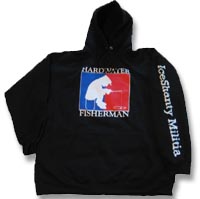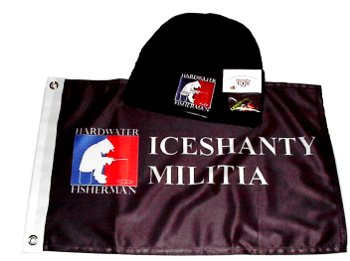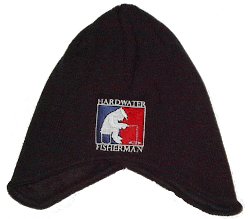“A small spawning population in 1996 and 1997 produced very strong year classes that resulted in a well-established Walleye fishery at Canyon Ferry Reservoir. Yellow Perch abundance and angler catch rates have plummeted to historically low levels.”
“The abundance of forage fish, such as White Suckers, has also declined to historically low levels.”
Page 80, https://myfwp.mt.gov/getRepositoryFile?objectID=84931
This paper is the works of perch, walleye and pike haters. Chapter 1 authored by
Robert Bramblett and
Alexander Zale. Both do studies only to support native fish.
Invasive Northern Pike are Associated with Range Contractions of Three
Native Cyprinids
Allison Stringer Montana Cooperative Fishery Research Unit, Montana State University
Robert Bramblett, Alexander Zale Pearl Dace Margariscus margarita, Northern Redbelly Dace Chrosomus eos, and Northern Redbelly
Dace C. eos X Finescale Dace C. neogaeus have undergone range contractions in Montana. Nonnative
Northern Pike Esox lucius have expanded from stocked reservoirs to prairie streams that are inhabited by
native cyprinids. Our objectives were to: (1) establish the current distributions of Pearl Dace and
Chrosomus spp., and (2) evaluate the extent to which their current distributions may have been
influenced by the expansion of Northern Pike. We captured Pearl Dace at only 8 of 85 sites in their
historic range and found that they may have been extirpated from 11 of 13 streams. Northern Pike were
captured in 9 of the 11 streams where Pearl Dace were not captured. Of 141 sites in the historic range of
Chrosomus spp., we captured Chrosomus spp. at 43 sites, and Northern Pike at 20 sites. Chrosomus
spp. and Northern Pike co-occurred at only one site. Expansion of Northern Pike may lead to the
extirpation of Pearl Dace from Montana and substantial declines in Chrosomus spp.
Evaluation of Suppression Methods Targeting Non-native Lake Trout
Embryos in Yellowstone Lake
Nathan Thomas Montana State University
Christopher Guy, Todd Koel, Alexander Zale Non-native Lake Trout Salvelinus namaycush threaten to extirpate native Yellowstone Cutthroat Trout
Oncorhynchus clarkii bouvieri in Yellowstone Lake, Yellowstone National Park. Suppression of Lake Trout
in Yellowstone Lake has been ongoing since 1995, primarily by extensive gillnetting. Bycatch of
Yellowstone Cutthroat Trout is associated with this removal method, which targets adult and subadult
Lake Trout. Alternative methods effective at causing mortality in early Lake Trout life stage(s) could be
used simultaneously with gillnetting to improve suppression effectiveness. Thus, the goal of this study
was to evaluate the efficacy of methods to induce mortality in Lake Trout embryos. In situ experiments
tested the effect of electroshocking, dredging, tarping, and covering spawning substrate with Lake Trout
carcasses on embryo mortality. Tarping had no effect, and dredging caused 27 percent (4.0 SE) mortality.
Electroshocking caused 99 percent (0.6 SE) mortality of embryos at the substrate surface but only 51
percent (20.8 SE) at 20 cm depth in the substrate. Lake Trout carcasses placed on the spawning
substrate caused 99 percent (0.01 SE) mortality of embryos both at the surface and at 20 cm in the
substrate. Lake Trout carcasses placed on Lake Trout spawning substrate may therefore be an effective
alternative suppression method if implemented on a large scale.
Then this class act US Fish and Wildlife Service
Wade Fredenberg
Western Lake Trout Woes - Revisited
Wade Fredenberg U.S. Fish and Wildlife Service
In Montana, Lake Trout Salvelinus namaycush are a self-sustaining introduced species established in
over 20 lakes, mostly west of the Continental Divide. Only a few lakes were intentionally stocked and
most of the rest were either illegally stocked or naturally invaded through interconnected waterways. Lake
Trout populations are a detriment to native fish in the majority of Montana waters where they occur,
including large lakes in Glacier National Park as well as Flathead, Swan, Whitefish, Lindbergh and
Yellowstone (Wyoming). In lakes with threatened native Bull Trout S. confluentus, Lake Trout
management runs headlong into the Endangered Species Act. In addition, ongoing Lake Trout expansion
ranks high amongst future threats to Bull Trout in the Clearwater lakes (Salmon, Seeley, Alva, Inez, etc.),
Lake Koocanusa, and others. Lake Trout are long-lived, hardy, resistant to starvation, reproduce liberally,
and prey upon and compete with other native and sport fishes. In systems where abundant invertebrate
food sources are added to the mix, a tipping point has often been exceeded for maintaining a diverse
native ecosystem. A 2009 review of seven western states revealed that agencies were increasingly
implementing strategies aimed toward reducing Lake Trout populations in an attempt to minimize their
growing impact. This presentation is a Montana update, but has broader ramifications, documenting
millions of dollars spent and mixed results in stemming the Lake Trout tide.
Transport-to-Adult Return Rates among Adfluvial Bull Trout Transported as
Juveniles Downstream of Hydroelectric Dams in the Lower Clark Fork River
Eric Oldenburg
Avista Paul Kusnierz, Ernest Keeley, Wade Fredenberg Avista owns and operates two dams on the Clark Fork River immediately upstream of Lake Pend Oreille:
Noxon Rapids and Cabinet Gorge. Historically, adfluvial Bull Trout Salvelinus confluentus in the lower
Clark Fork River system utilized Montana tributaries for spawning and early rearing before returning to
Lake Pend Oreille. In 2000, Avista initiated a two-way transport program to reestablish connectivity for
adfluvial Bull Trout between Lake Pend Oreille and tributaries. Since this time, juvenile Bull Trout have
been trapped while outmigrating from Montana streams and transported around the dams to Lake Pend
Oreille. Night electrofishing downstream of Cabinet Gorge Dam has been used to capture returning adults
to transport to their natal streams. One goal of this research was to develop an understanding of variables
associated with the likelihood that juvenile transports would subsequently be recaptured as adults.
Multiple logistic regression was used to evaluate the relationships among numerous independent
variables and the binary response variable (i.e., recaptured as an adult or not). The overall transport-to-adult
return rate was 0.055 (i.e., 5.5%). The best-fit reduced model included fish length, month of
transport, and year of transport. Results from this study were used to modify length criteria for juvenile
transports and to eliminate trapping and transport during July and August when the likelihood of transport-to-adult
return approached zero.
Conservation of Bull Trout in the Lower Clark Fork River: Evaluating the
Effects of Passage, Nonnative Trout Suppression, and Habitat Restoration
Douglas Peterson U.S. Fish and Wildlife Service
Shana Bernall, Wade Fredenberg, Sean Moran, David Schmetterling Populations of Bull Trout Salvelinus confluentus in the lower Clark Fork River, MT, are impaired from a
variety of reasons. Hydroelectric dam mitigation funds have been spent on projects to improve their
survival, but until now there has been no means to rank the relative efficacy of management alternatives.
Using a decade of data, we developed a probabilistic model to evaluate management alternatives for ten
local populations (i.e., patches) of Bull Trout. Under current environmental conditions and management,
the model predicted there were: three patches with a high likelihood (>85%) of a stable or increasing Bull
Trout population (λ of 0.9-1.1 or greater); four with moderate likelihood (>59 to 76%); and three where the
likelihood (48-54%) did not strongly indicate stability. An aggregate model for the eight Bull Trout patches
upstream of Cabinet Gorge Dam predicted only a moderate (59%) likelihood that the metapopulation was
stable or increasing. Management actions that reduced abundance of nonnative trout had the largest
effect on population growth in individual patches and the metapopulation, and upstream transport of
adults captured downstream of Cabinet Gorge Dam was also important. Habitat restoration had little
effect unless coupled with other interventions. The model and its outputs are best described as testable
hypotheses, but results suggest a greater intensity and more targeted interventions may be needed to
achieve management objectives.
Then backed by the money player
Avista Corporation Paul Kusinerz, Eric Oldenburg as in the studies above.
They are all members of certain societies that are advocates for Bull and Cutthroat. Just how they play with the funding behind them, with a lot of bull and cutthroat practices.
I have not finished the paper but pretty bogus leaning so far with the players involved who are said to be
"experts"What is confusing is that Walleye Unlimited gives donations to these people and to their organizations, Walleye Unlimited sponsored the Westernslope Cutthroat Trout seminar for American Fisheries Society Western Division among other sponsorships they provide to deplete pike, perch, and walleye.
When the wolf in sheep's clothing is in your flock, how will you actually succeed?







